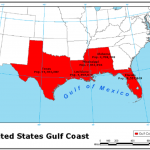- Troubled Projects – The recognition and management of Troubled Projects represent one of the most unique situations in the spectrum of project management challenges. Specialized skills and approaches are required in order to achieve successful outcomes. M&M will post a series of observations and recommendations regarding the recognition, recovery and resolution associated with Troubled Projects.
- Troubled Projects –A Troubled Project may be considered as being a project that may not achieve a successful outcome. Modern project success criteria centers on project completion / delivery that is: Within allocated time duration; within budgeted costs; Achieving requisite performance level(s); and is Acceptable to the Customer / Buyer.
- Troubled Projects –A Troubled Project is expected to, forecasted to, or otherwise may not achieve one or more of the project’s success criteria / objectives. Typical success criteria are project completion / delivery that is: Within allocated time duration; within budgeted costs; Achieving requisite performance level(s); and is Acceptable to the Customer / Buyer.
- Troubled Projects – Call to Action Basically, a Troubled Project is one that is reasonably expected to not achieve its Business Case objectives. Managerial action is needed to enhance the possibility of achieving these Business Case objectives. This managerial action may be summarized is the three R’s – Recognition, Recovery and Resolution.
- Troubled Projects – Leading Indicators Recognition process should begin with leading indicators. Some leading indicators – Criticisms by Key Stakeholders, High Turnover of Key Stakeholders, Untimely / Late Decision Making, Poor Morale, Working Excessive Hours (other than occasionally), and / or Frequent Crisis Management.
- Troubled Projects – Leading Indicators Recognition process should begin with leading indicators. More leading indicators – Labor Peak Greater than Planned, Labor Peak Later than Planned, Unexpectedly High Field Labor Turnover, Negative Cash Flow, Billing / Invoicing Less than Planned, and / or Construction Support Expenditures Greater than Planned.
- Troubled Projects – Leading Indicators Recognition process should begin with leading indicators. Even more leading indicators – Trending / Forecasting not in use, illogical, highly optimistic, unrealistic; Baselines not in use; Commodity consumption exceeding planned; Meetings are combative; Unwillingness to accept responsibility; and / or Poor change management.
- Troubled Projects – Recognition There is urgency in the timeliness of recognition. Early recognition and action increases the quality of Recovery (remember – Recognition, Recovery and Resolution) options and potential results. Like many project challenges – “Find IT early, Fix IT fast.”
- Troubled Projects – Recognition From leading indicators, segway into more quantitate project Key Performance Indicators (KPI’s). Use all KPI’s together (not individual KPI’s) to consider whether trouble exists. There are about five: Schedule (usually CPM), Progress Curves (rate of progress), Productivity (key labor groups), Scope of Work and Total Labor per month.
- Troubled Projects – Recognition The transition from Recognition to Recovery is the “trick.” Recovery – Mastering the Art of the Achievable. Unrealistic / Excessively Optimistic recovery plans and actions are poison. Recovery plans that lack ambition and aggressiveness are vulnerable to criticism. Key attributes – Integrity, Leadership, Courage and Prayer.
- Troubled Projects – Recovery The three R’s when Managing Troubled Projects are Recognition, Recovery and Resolution. Recognition and Recovery are addressed in Project Recovery, a highly authoritative publication authored by Dr. Harold Kerzner. Dr. Kerzner provides a complete process and relates it to Project Management Institute (PMI) managerial process.
- Troubled Projects – Recovery As discussed in and earlier post, the full set of KPI’s are needed. Often, some are missing or not used. If KPI’s are missing, build the missing KPI’s by reverse engineering using available data and that can be efficiently accessed. Build the KPI from present back to start of the project. Do not delay other actions – work concurrently.
- Troubled Projects – Recovery Analyses of the KPI’s combined with project assessments will reveal the path forward for recovery. Once the path has been identified and planned, rebaseline the KPI’s such that meaningful managerial feedback can be achieved. For the one or two KPI’s that reveal recovery status and progress, shorten the reporting period (e.g. monthly to weekly).
- Troubled Projects – The recognition and management of Troubled Projects represent one of the most unique situations in the spectrum of project management challenges. Specialized skills and approaches are required in order to achieve successful outcomes. M&M will continue to post a series of observations and recommendations regarding the recognition, recovery and resolution associated with Troubled Projects.
- Troubled Projects – Call to Action Basically, a Troubled Project is one that is reasonably expected to not achieve its Business Case objectives. Managerial action is needed to enhance the possibility of achieving these Business Case objectives. This managerial action may be summarized is the three R’s – Recognition, Recovery and Resolution.
- Troubled Projects – Recognition From leading indicators (see earlier posts), segway into more quantitate project Key Performance Indicators (KPI’s). Use all KPI’s together (not individual KPI’s) to consider whether trouble exists. There are about five: Schedule (usually CPM), Progress Curves (rate of progress), Productivity (key labor groups), Scope of Work and Total Labor per month.
- Troubled Projects – Owners and Major Disruptions – The world is in the midst of major disruptions to capital projects. Projects are being delayed, postponed, suspended, cancelled and otherwise seriously impacted. As owners consider the path forward, they first are compelled to consider putting their investment into a suitable status for the “hold” period (without knowing the length of the “hold”). Putting the project on hold involves creating stability and closure (temporary or permanent) with all major stakeholders.
TROUBLED PROJECTS
CAPITAL PROJECTS COST CONTROL
In light of the 2017-2018 Construction Forecasts, Capital Projects Cost Control is paramount and one to take a more acute focus.
In Project Execution, Field Labor Shortages Represent The Highest Risk To Achievement Of Time & Cost Objectives Large And Complex Projects.
Major Shortages in Construction Field Labor Will Influence (Negatively) US Construction Costs.
In Execution (After Stage Gate Three), A Major Risk to Project Cost Management Resides in Labor Cost (overruns),
The Highest Risk to Achieving Project Cost Management Occurs In Execution – After Stage Gate Three/Full Funding.
Driven By A Long History of Cost and Schedule Overruns, Managerial Thinking Now Prioritizes Cost Certainty.
On Complex Capital Projects, Cost Certainty Has Become a Compelling Objective.
McLaughlin & McLaughlin has assisted numerous Major Capital Projects successfully over the years by providing cost effective business solutions and recovery plans.
What makes McLaughlin & McLaughlin unique from the others is that we not only perform project management services but dispute resolution as practitioners.
It is important to note that McLaughlin and McLaughlin Project and Dispute Consulting LLC [M&M] is not a law firm and is not intending to provide legal advice. M&M is a consulting firm providing (among other services) non-legal expertise in construction claims, dispute resolution and litigation support. For further information on M&M services, please see www.McLaughlinandMcLaughlin.com.
LABOR OVERRUNS
As the increase of projected Major Capital Projects for 2017-18 emerge with all its implications troubled projects are a likely result. LABOR OVERRUNS are a typical component in troubled projects.
LABOR OVERRUNS – impact several project baselines. Cost, Schedule and Progress are at risk.
LABOR OVERRUNS – Labor Overruns are a major risk in any project with a significant labor component.
LABOR OVERRUNS – Early detection, correction and management require use of proper KPI’s.
LABOR OVERRUNS – Use of thoughtful KPI’s facilitate early/proactive corrective action.
LABOR OVERRUNS – Labor Shortages in 2017 and beyond will lead to upward pressure in labor rates.
LABOR OVERRUNS – Labor shortages in 2017 and beyond will lead a man-hour overruns (poor productivity).
McLaughlin & McLaughlin has assisted numerous troubled Major Capital Projects successfully over the years by providing cost effective business solutions and recovery plans.
It is important to note that McLaughlin and McLaughlin Project and Dispute Consulting LLC [M&M] is not a law firm and is not intending to provide legal advice. M&M is a consulting firm providing (among other services) non-legal expertise in construction claims, dispute resolution and litigation support. For further information on M&M services, please see www.McLaughlinandMcLaughlin.com.
CAPITAL PROJECTS MANAGEMENT – US Gulf Coast
Capital project construction forecasts (US Gulf Coast) concur regarding robust project activity and growth for calendar years 2017 and 2018. These glowing forecasts are tempered with forecasts of craft labor, field supervision and project/construction management shortages. Demand for experienced project resources is expected to exceed supply. This is similar to Venezuela (post-nationalization), Canada (oil sands expansion) and other marketplace imperfections. M&M has evaluated these forecasts and rationalized the supply and demand implications as well as professional managerial options and paths forward. This is an emerging and dynamic managerial, consulting and legal business opportunity. M&M’s recent and extensive work in the field at active job sites of large and complex projects confirms the emerging situation. Here are a few topics, questions and/or observations:
- Skilled, experienced and dynamic management will be required.
- Cost and/or Schedule Certainty is clearly at risk regardless of the development and delivery system (PMI, CMAA, CII, AACE, IPA, proprietary or other systems).
- Construction schedules will be driven or constrained by human resource shortages (field labor, engineering, project management).
- Managerial planning and management must focus on:
- Acquisition of adequate supervision and field labor force
- Optimization of your field labor (and engineering labor).
It is important to note that McLaughlin and McLaughlin Project and Dispute Consulting LLC [M&M] is not a law firm and is not intending to provide legal advice. M&M is a consulting firm providing (among other services) non-legal expertise in construction claims, dispute resolution and litigation support. For further information on M&M services, please see www.McLaughlinandMcLaughlin.com.
https://twitter.com/McLaughProject
https://www.facebook.com/McLaughlin-McLaughlin-Project-and-Dispute-Consulting-LLC-134974839908446/
Labor Productivity
Project Professionals a blog by McLaughlin & McLaughlin Project and Dispute Consulting LLC will be offering a few project tips regarding Project Management and Labor Productivity over the next few weeks.
Labor Productivity – Productivity Factor (PF) according to #AACEI equals Actual Productivity divided by Baseline or Planned Productivity.
Labor Productivity – Performance Factor (PF), according to Schwartzkoff equals Estimated Unit Rate divided by Actual Rate.
Labor Productivity – A simple KPI is the ratio of Planned Man-Hours divided by Actual man-hours – “Earned over Burned.”
Labor Productivity – There are several KPI’s that can be used for project/construction management.
Labor Productivity – Use of labor productivity KPI facilitates proactive project management.
Labor Productivity – As a leading Indicator, Labor Productivity represents an excellent management tool.
It is important to note that McLaughlin and McLaughlin Project and Dispute Consulting LLC [M&M] is not a law firm and is not intending to provide legal advice. M&M is a consulting firm providing (among other services) non-legal expertise in construction claims, dispute resolution and litigation support. For further information on M&M services, please see www.McLaughlinandMcLaughlin.com.
https://twitter.com/McLaughProject
https://www.facebook.com/McLaughlin-McLaughlin-Project-and-Dispute-Consulting-LLC-134974839908446/
Labor Productivity Problem Recognition
Project Professionals a blog by McLaughlin & McLaughlin Project and Dispute Consulting LLC will be offering a few project tips over the next few weeks.
Today’s focus lists a few key points to recognizing the problems associated with Labor Productivity issues. Problems from the issues may lead to owners and contractors achieving cost uncertainty and schedule uncertainty.
- Negative Cash Flow on Project/Contract/Job.
- Labor Force (Histogram) Peak Later Than Planned.
- Field Labor (Crew Size) Peak Greater than Planned.
- Low Quantities Installed Per Man-Hour Actual/Expended.
- Abnormally/Unexpectedly High Field Labor Turnover Rate.
- Billing less than Planned.
- High Number of New Revisions to Scope Documents.
It is important to note that McLaughlin and McLaughlin Project and Dispute Consulting LLC [M&M] is not a law firm and is not intending to provide legal advice. M&M is a consulting firm providing (among other services) non-legal expertise in construction claims, dispute resolution and litigation support. For further information on M&M services, please see www.McLaughlinandMcLaughlin.com.
https://twitter.com/McLaughProject
https://www.facebook.com/McLaughlin-McLaughlin-Project-and-Dispute-Consulting-LLC-134974839908446/
CONSTRUCTION CLAIMS and DISPUTES – Subject Series Summary – Update 11-Nov-2014
Just as the businesses and economies have cycles, capital projects (particularly engineering and construction) have recurring cycles. The pendulum swings back and forth within the bounds of the capital project cycle. In capital projects, the cycle can be three to five years, depending on the economy, size and complexity of the projects and other factors.
At this time, the market seems to be transitioning from project planning and early execution into middle to later-stage execution with emergence of disputes. As the claims and disputes marketplace intensifies over the next several years, Construction Claims and Disputes will become an increasingly commonplace and a relevant topic for capital project management professionals.
Construction Claims and Disputes continues to be the most popular subject on Project Professionals. Further, it is the most requested line of services provided by McLaughlin & McLaughlin. M&M are project management practitioners (in the field) and, yes, we practice what we preach. Further, our choice of topics for Project Professionals posts is driven by and reflective of practical and current issues. This is not esoteric, academic or hypothetical “stuff”.
This summary update provides readers with an overview of prior posts and provides a baseline for future posts that will follow on a timely basis. Initially, this Subject Series, Construction Claims and Disputes, was posted during January 2011 through July 2014. During the past several years, greater than 25% of views by visitors have been to this Subject Series.
Ideally this Subject Series provides a starting point to investigate best practice on many planning and execution features of construction claims and disputes. [Read more…]
CONSTRUCTION CLAIMS and DISPUTES – (Case Study 01)
Turnkey Contract Scope of Work
This McLaughlin and McLaughlin (M&M) post is another in a Subject Series Construction Claims and Disputes. This is the first of several Case Studies that will be posted. Case Studies are examples of real life situations and draw upon actual events, adjusted and modified to focus on one or more points.
This Case Study was developed for the American Association of Cost Engineers (AACE) International annual meeting that recently occurred (June 15th) in New Orleans. The specific presentation was Claims Avoidance through Effective Cost Engineering. This panel discussion was part of the Energy Industry Track.
This particular Case Study in Construction Claims and Disputes focuses on claims in (lump sum) Turnkey contracts. Further, it focuses on Scope of Work. The vast majority of construction claims and disputes have their origins in Scope of Work. Hence, this is a logical starting point and has the widest application.
The Case Study 01 is presented in a video using PowerPoint with animation and voice over. This format is used for ease of review and presentation.
We wish you good luck in your construction claims and disputes regarding scope of work.
It is important to note that McLaughlin and McLaughlin [M&M] is not a law firm and is not intending to provide legal advice. M&M is a consulting firm providing (among other services) non-legal expertise in construction claims, dispute resolution and litigation support. The Resource Center is for the convenience of blog visitors and M&M does not offer this for commercial purposes. For further information on M&M services, please see www.McLaughlinandMcLaughlin.com.
Project Execution Strategy Presentation
CONSTRUCTION CLAIMS and DISPUTES – (Part 9) Why Scope of Work?
Why Scope of Work?
This McLaughlin and McLaughlin (M&M) post is the ninth in a Subject Series Construction Claims and Disputes.
Scope of Work is (or should be) the basis for most claims and disputes. As we previously discussed, claims and disputes regarding scope of work are a widespread problem and represent the most common issue. Perhaps 75 to 90% of all engineering and construction claims and disputes involve contract scope of work. But the issue goes further. Scope of work influences and is a foundation for delay, acceleration, disruption, payment and many other types of disputes. Consequently, virtually all claims (should) start with scope of work.
Scope of work is a huge factor in capital investments. In the engineering and construction market, investments total in the hundreds of billions of dollars (USD). These investments are increasing, particularly in areas such as the US Gulf Coast. Typical budgets for changed work are targeted for 10% which makes this market of tens of billions of dollars (USD). However, this is merely the budget, not the reality.
Most of these investments involve contracting for goods and services. Each of these transactions must consider scope of work (services, facilities, supply) as primary to the transaction. Consequently, each transaction has risk of claims and disputes regarding the related scope of work. Stakeholders include: owners, prime contractors, subcontractors, engineers, architects, lawyers, consultants, investors, lenders, sureties, governments and others.
Recognition, entitlement, pricing and proving (if necessary) claims for additional compensation related to scope of work is a huge challenge with large amounts of money at risk. Largely, this is not legal work. However, it requires expertise. If the project team lacks this expertise, a subject matter expert (SME) is needed. The SME must possess the expertise in recognition, entitlement, pricing, evidence and related impacts to the project’s performance (time, cost, and other considerations).








